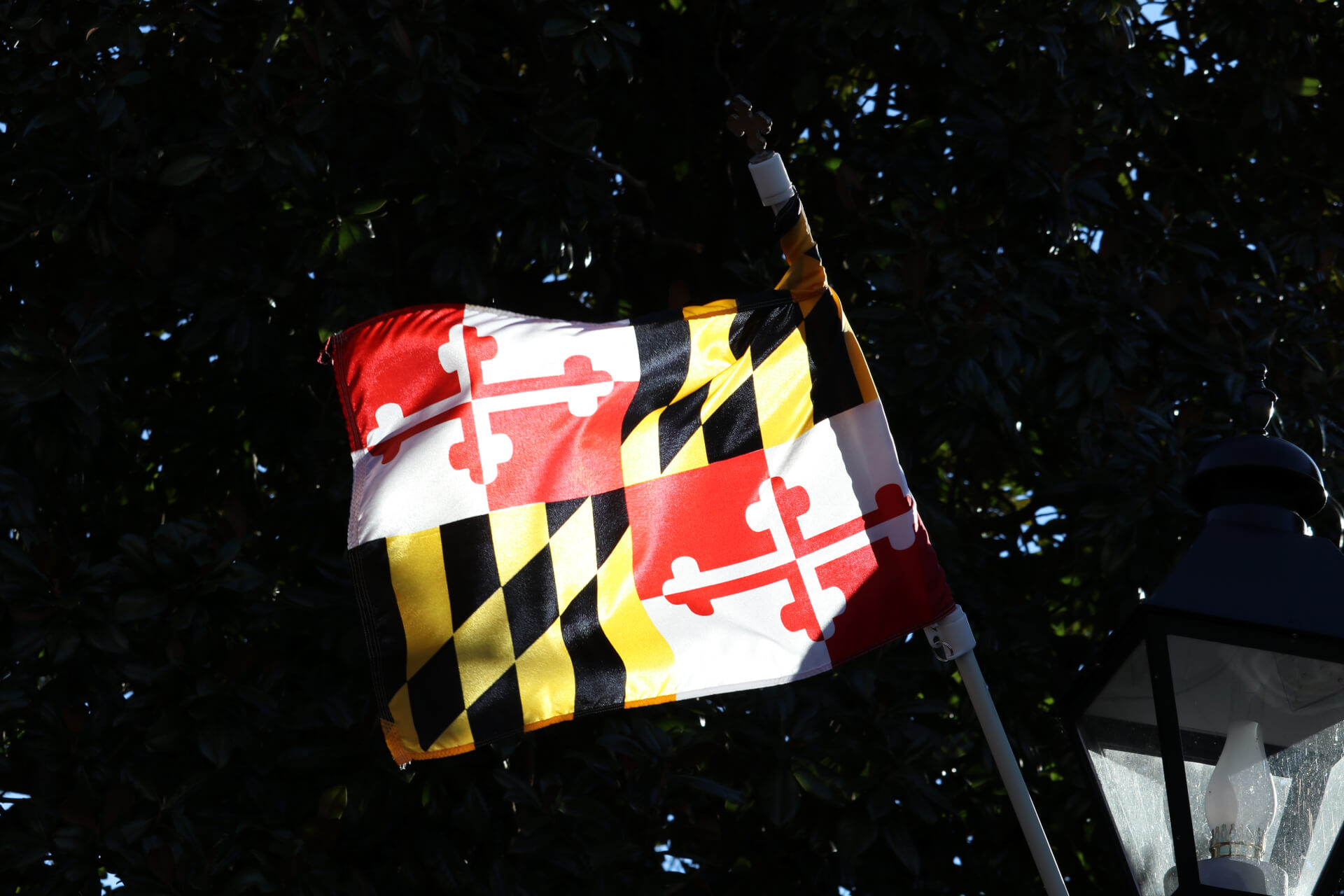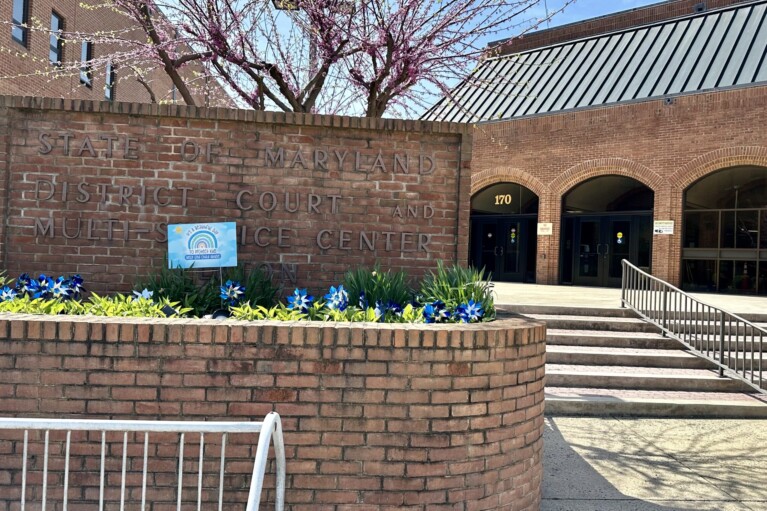From The Almanac of American Politics: Maryland a Microcosm of the Trends Shaping Today’s Democratic Party

Today Maryland Matters offers a preview of the newest edition of the Almanac of American Politics, the classic political reference book for political junkies.
Maryland, one of the nation’s most Democratic states, serves as a microcosm of the trends shaping today’s Democratic Party: continuing lopsided support in ethnically and racially diverse urban areas, growing Democratic success with affluent, suburban voters and government employees, and a waning of the party’s influence in rural areas.
Just south of the Mason-Dixon line and north of the Union-Confederate lines during most of the Civil War (and the scene of its bloodiest one-day battle, Antietam), Maryland is a crossroads state, with both Northern and Southern influences and with both industrial and rural economies. This was the only one of the 13 colonies founded by Roman Catholics— the Calvert family— and its embrace of religious tolerance came less from high-minded ideals than from the Calverts’ desire to protect their property from religious attacks. Similarly, although hot-blooded Baltimoreans wanted to secede from the Union in 1861, cooler heads prevailed. (The state song, until its elimination in 2021, was “Maryland, My Maryland,” is based on a poem condemning Abraham Lincoln’s suppression of pro-Confederate rioters.)
The Puritan impulse was never lively in Maryland. Prohibition was enforced only laxly in Baltimore, to the delight of its great journalist-cum-lexicographer H.L. Mencken. Slot machines were legal for years in the rural counties of the Eastern Shore and, after years of controversy and over the pleas of racetrack owners, were legalized statewide in 2008; voters approved table games in 2012. In some corners of the state, segregation was evident well into the 1960s, and longstanding efforts to remedy segregation within the state’s university system recently reached a legal settlement in 2021, totaling $577 million over 10 years. Much of Maryland’s political history reads like a chronicle of rogues, notably Spiro Agnew, who was Maryland’s governor when Richard Nixon tapped him for his 1968 ticket and then resigned as vice president in October 1973 when he was charged with income tax evasion. Maryland’s genial tolerance may have given it a little too savory a history, but this state cherishes its uniqueness.
Chesapeake Bay is the nation’s largest estuary, with water saltier than a river but fresher than the ocean, and with unique shellfish and watermen. Pollution and years of overharvesting drastically reduced its yield, and the terrapin and Chesapeake oyster are rare today. But an ongoing statewide Save-the-Bay movement is having a positive impact. Crab and anchovy counts have improved, though rising water temperatures have hampered bottom-dwelling animals and grasses.
Maryland has reason to be proud of the economy, or economies, it has built over the years. During and after World War II, half the state’s population lived in the city of Baltimore. Then, in a pattern documented in Barry Levinson’s iconic Baltimore movies, including of Diner, Tin Men and Avalon, the proportion cratered. The city of Baltimore’s population has fallen from 1 million in the early 1950s to 593,490 in 2019. With its large suburban population thick with federal employees and contractors, Maryland leads the United States in median household income at almost $87,000. Combined, the Washington and Baltimore metropolitan areas include just over 9 million people, bigger than either the Dallas or Houston metro areas. But Baltimore and Washington have different histories, economic bases, and attitudes.
Washington is a one-industry, white-collar, capital city; the federal government kept it going while the rest of the country endured the sluggish recovery from the Great Recession. Maryland’s roughly 145,000-strong federal workforce includes many employees at the massive National Institutes of Health complex in Bethesda and the Food and Drug Administration in Rockville; these, in turn, have generated a thriving health-related and biotech corridor in Montgomery County. Baltimore, by contrast, started off as a port and industrial city; Bethlehem Steel once operated the massive Sparrows Point plant on the east side of the city. The city managed to stay diversified and largely successful as it spread out into the countryside from its central core at the Inner Harbor and its solidly built downtown edifices. It is home to the popular Oriole Park at Camden Yards (the first of the new-old ballparks of the 1990s), the Babe Ruth Birthplace and Museum, and Johns Hopkins University, with its Georgian buildings along the affluent corridor that runs directly north from downtown all the way to suburban Hunt Valley. Howard County, which straddles the D.C. and Baltimore metro areas, saw its population grow almost 13 percent during the past decade.
In recent years, however, the city of Baltimore has been known for its more dystopic elements, painstakingly (and prophetically) chronicled by the celebrated HBO dramatic series The Wire. In Maryland, more than 70 percent of prison inmates are Black, more than twice the percentage of Black residents in the state and the highest African-American incarceration rate of any state in the country, according to the Justice Policy Institute. Amid a scourge of drugs and crime in Baltimore between 2011 and 2014, the city paid the staggering sum of $5.7 million for harms inflicted by police, with more than 100 victims winning court judgments, the Baltimore Sun revealed. The situation exploded in 2015, when Baltimore resident Freddie Gray, 25, died of spinal injuries after being taken into police custody. Rioting, particularly in the impoverished Sandtown-Winchester neighborhood, ensued. A curfew was imposed, and eventually charges were filed against six police officers. None were convicted. In August 2016, the Department of Justice released a report critical of the city’s aggressive policing strategy against quality-of-life crimes. Gray’s death shattered residents’ trust in the police, and amid shifting political and law-enforcement leadership, the police seemed to retreat; as a result, violent crime surged, with Black residents accounting for most of the victims. In 2017, Baltimore “recorded 342 murders— its highest per-capita rate ever, more than double Chicago’s, far higher than any other city of 500,000 or more residents and, astonishingly, a larger absolute number of killings than in New York, a city 14 times as populous,” wrote Baltimore-based journalist Alec MacGillis. The city set a new murder record in 2019, before seeing the number fall slightly in 2020. Turnover in the mayor’s office has not helped. Sheila Dixon resigned in a plea agreement with prosecutors in 2010. Her successor, Stephanie Rawlings-Blake, was damaged by the fallout from Gray’s death and declined to seek another term. And her successor, Catherine Pugh, resigned amid a scandal involving insider deals to purchase a children’s book she wrote.
In this context, it’s hard to believe that, historically, most of Maryland’s successful statewide politicians once came from Baltimore, including two mayors who won the governorship, William Donald Schaefer and Martin O’Malley. For three decades, Maryland’s senators lived in Baltimore and commuted to Washington. Baltimore has a long Democratic tradition and most of its voters are registered Democrats. Until 2014, when Republican Larry Hogan won the first of his two terms, Democrats had yielded the governorship only once since 1966 — from 2002 to 2006, when Republican Bob Ehrlich served. In the state’s U.S. House delegation, Democrats outnumber Republicans 7-to-1, an even more extreme discrepancy than voting patterns would suggest, thanks to an aggressive gerrymander. Maryland’s strong Democratic preferences have enabled its members of Congress to wield influence, though often quietly, by the likes of Sens. Paul Sarbanes, Barbara Mikulski, Ben Cardin, and Chris Van Hollen. In the House, Majority Leader Steny Hoyer serves as the No. 2 to Speaker Nancy Pelosi, whose father, Thomas D’Alesandro, was a congressman from, and mayor of, Baltimore; the rivalry between Pelosi and Hoyer began when they were interns in the office of Sen. Daniel Brewster of Maryland. Baltimore-based Rep. Elijah Cummings died in 2019 following a distinguished career as a civil-rights advocate and chair of the House Committee on Oversight and Reform. (Another fixture in Maryland politics died in 2021: Thomas V. Mike Miller Jr., who served as state Senate president between 1987 and 2019.)
For many years, Maryland was a marginal state in national politics; it voted Republican for president as recently as 1988. But demographic and geographic shifts have made it solidly Democratic. While the state was 80 percent White in 1970, Maryland now ranks fourth-highest nationally for its Black population at 31 percent. Many Blacks in Maryland, especially in Prince George’s County, are college-educated and economically upscale, although the coronavirus pandemic has demonstrated that even affluence doesn’t prevent disproportionately negative health outcomes for African Americans. Meanwhile, the percentage of foreign-born residents in Maryland trailed the national average until around 2005 but now surpasses the nation as a whole, at 15 percent. In Montgomery County, an inner-ring suburb that saw its population grow by about 8 percent over the past decade, non-Hispanic Whites now account for less than 43 percent of the population. Hispanics account for 20 percent of the county’s population and Asian-Americans account for 16 percent; almost one-third of county residents are immigrants.
In the 1980s, Montgomery and Prince George’s weren’t more Democratic than the rest of the state and were sometimes less so. But during a generation in which Republicans have backed smaller government and taken conservative cultural stands, Montgomery and Prince George’s counties have become overwhelmingly Democratic and have cast a larger shadow statewide. In 2020, Montgomery and Prince George’s cast 32 percent of the state’s two-party presidential vote in the state, well above the combined 22 percent cast by Baltimore city and county. Another 16 percent was cast in the Baltimore satellite counties of Anne Arundel and Howard, while 30 percent was cast elsewhere in the state. Once-rural and predominantly white Charles County is now 50 percent Black and has become Democratic as well.
Such transformations have pushed Maryland to the left. In 2012, Maryland voters approved in-state college tuition for children of undocumented immigrants and measures in favor of same- sex marriage. Hogan’s governorship curbed the most progressive impulses of the legislature’s wide Democratic majority, but he’s been among the nation’s most moderate Republicans, protecting the state’s Affordable Care Act insurance exchange and regularly taking issue with statements and policies from President Donald Trump. His approach produced high approval ratings and a 55%-44% reelection victory in 2018 despite a strong Democratic environment nationally; Hogan poached an estimated one-third of Democrats statewide. But Hogan aside, Democrats have maintained a yawning edge in the state. In the 2020 presidential race, Joe Biden won the state by 33 points, up seven points from Hillary Clinton’s then-record margin in 2016. Biden flipped three counties Trump won in 2016: Frederick, Kent, and Talbot. Biden also expanded the winning Democratic margins by between five and 13 points in Montgomery, Charles, Howard, Anne Arundel, and Baltimore counties. Unless Maryland Republicans manage to clone Hogan, the GOP will face a distinctly uphill battle to remain competitive in the state.
In the eight presidential elections since 1992, Maryland’s Democratic percentages consistently ranked high among the states— second in 1992, sixth in 1996, fourth in 2000 and 2004, fifth in 2008 and 2012, third in 2016 and 2020. Only Massachusetts and Vermont gave a higher percentage to Joe Biden, who won the state 65%-32% over Donald Trump. Two regions drove Biden’s dominance: the close-in suburbs of Washington D.C., and Baltimore. Montgomery and Prince George’s counties, which run the spectrum of wealthy white suburbs to working-class African-American communities, gave remarkable 79 and 89 percent of their respective votes to Biden. In Baltimore city, Biden won about 87 percent. The suburbs of Baltimore County gave Biden 62 percent of its votes; Howard County, which is exurban D.C. and Baltimore, gave 71 percent to Biden. In the state’s rural Eastern Shore and western Appalachian regions, Trump won a solid majority.
Maryland’s 2020 primary was originally scheduled for April 28, but was pushed back because of the coronavirus and held on June 2, long after the Democratic nomination was decided. Joe Biden won the race with 84 percent of the vote.
Congressional districts
The long-running Maryland redistricting saga became the focus of Supreme Court review — more than seven years after the state approved the congressional map. In June 2019, the justices ruled, 5-4, that federal courts had no authority to rule on so-called partisan gerrymander cases. The case, one of several redistricting claims that has drawn its attention in recent years, resulted from a ruling by a three-judge court in November 2018 that held unconstitutional the drawing of the 6th District in the western part of the state. That court had ordered a new map to be drawn for the 2020 election. Republican Gov. Larry Hogan has continued to call for changes in the state’s handling of redistricting, which opens the door to other options to reverse the Democrats’ revision of the lines for the 6th from what had been a safely Republican district to a safely Democratic district. Hogan also wants to break up the blatant gerrymander of several districts in the Baltimore area, though he has limited direct influence with the Democratic-controlled legislature.
Democrats in Maryland have controlled redistricting since 2000 and have used their power to maximum advantage. Going into the 2002 election, the delegation was divided 4-4 between the two parties. After the boundaries were changed, the suburban Baltimore 2nd District became inhospitable for Republicans, as did the Montgomery County-centered 8th district. That left only two Republican districts, the 1st and the 6th. In 2011, Gov. Martin O’Malley and Democratic legislators made the 1st District more Republican by adding GOP precincts in suburban Baltimore and heavily Republican areas in Carroll County, which had been in the 6th. Republican Andy Harris ended up with a very safe seat, which covered the Eastern Shore and areas north of Baltimore. At the same time, they made the 6th District in western Maryland far less Republican, chiefly by adding a large chunk of heavily Democratic Montgomery County and subtracting much of Frederick County. These moves made the adjacent 8th District less Democratic, but not enough to put their party in peril. As intended, Republican Rep. Roscoe Bartlett lost in the newly drawn 6th. To maintain two Black-majority districts— the 4th in metro Washington and the 7th in metro Baltimore— the redistricters drew convoluted lines that have been featured among the nation’s most gerrymandered districts.
…[Hogan] has said he will use his leverage to force some changes. That could enhance GOP prospects for one or perhaps two additional seats that will be competitive, at least, including the western Maryland district. But it also could make the 1st District more competitive for Harris, who has had chilly dealings with Hogan and other Maryland GOP leaders.
Copyright © The Almanac of American Politics.
This feature was provided by and is included in The Almanac of American Politics 2022 edition released this month. To learn more about this publication, visit www.thealmanacofamericanpolitics.com.


